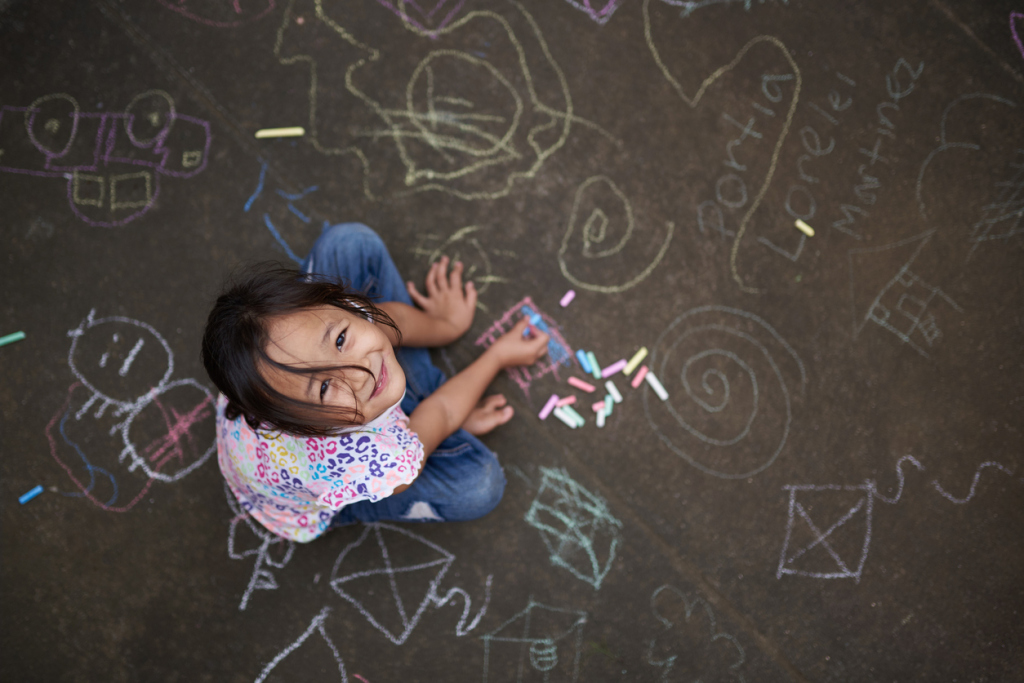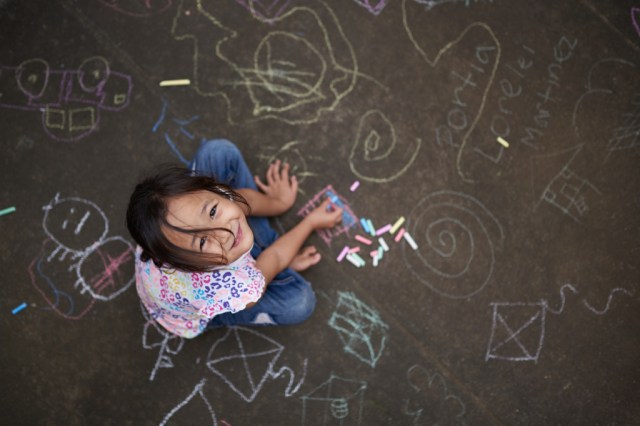
Photo: istock
Many parents around the world are wondering what to do with their kiddos now that school is almost over and camps have been canceled. If you’re looking for ideas for kids and families, please check out some ideas below!
Ages 3-5:
- Painting by numbers. Around this age, learning numbers can give them a head start when they do start school. Painting by numbers is basically coloring books, but with numbers that match the corresponding area of the picture. You can paint by numbers using watercolor, color pencils, or crayons. Find great painting by numbers books online and even at your local bookstore.
- Ready to read. These fun and educational by-age activities are great for beginner learners. Depending on their age and skills, you can find lots of fun activities for your kids.
- Sidewalk chalk. This outside activity is tons of fun for little ones. Take some colorful chalk and write and/or draw uplifting words and art for neighbors. Your child can certainly do this when no one else is around for safe distancing practice, but imagine the fun and delight your neighbors will have when they walk out of their front door! If you don’t have chalk available, you can make some at home if you already have the ingredients.
Ages 5-8:
- Gardening at home. Gardening is one of the most relaxing and rewarding skills you can teach your children. In fact, gardening is great for any age, gender, and experience. The easiest and most fun way of gardening is starting with seeds. Seeds grow into seedlings which eventually become larger plants that will grow into flowers or food. Seeds do take a lot longer than seedling plants but they are much more rewarding when you can track the progress of your seeds.
- Computer games. Since we live in a technical world, kids eventually will be using computers and technology. Most school-aged kids are already using computers at school. If you have a computer at home, this is a great time to teach your young learners some technology skills. Once they are in school, they’re required to do basic reading and other curricula on computers. Based on your own family routine, limit kids this age to up to 1 hour of online learning, whether through games or skill setting on Google Docs.
- Writing letters and cards. Writing letters and greeting cards seems to be a lost skill. But some teachers across the country are still teaching young students how to write a proper letter and greeting card. This important skill can later be applied when kids attend birthday parties or need to write to a company for school projects. You can use whatever paper stock you have at home.
Ages 9-11:
- Special interests. Around this age, your children probably already developed their own interests. Broaden their interests (within safety reasons) by having them go online for research or reading books.
- Crossword puzzles and Sudoku. These brain-challenging activities are perfect for growing minds. Find easy ones that are appropriate for their age and skills.
- Gardening advanced. If you have younger kids as mentioned above, their older siblings can also help with gardening. Have kids at this age write names of the plants on wooden sticks, paint clay pots, or even build small wooden planters with a parent’s help.
Ages 12 & Up:
- Advanced readers. Kids around this age either already developed a love for reading, or are reading only when it’s required by the school. But it’s never too late to get your kids to enjoy reading. If you have an older child that’s struggling with reading a book from beginning to end, get them to read books of their personal interests. If they’re interested in a certain sport, find books about that sport. Interested in cars? Find books on how to fix cars or design cars. Interested in fashion? Find books and magazines that focus on fashion design, fashion merchandising or making clothing.
- Graphic novels. Contrary to what you read when you were younger, graphic novels have really changed and evolved. Graphic novels or comic books are books that tell stories through art. Depending on the interests of your pre-teen and teen, graphic novels range from popular series to mainstream superhero books.
- Upcycling projects. Upcycling is one of the best ways to reduce waste. With the world around us fighting climate change and trying to reduce waste, upcycling is both fun and ethical. Kids as young as 8 can learn to upcycle what they have around the house, in their neighborhood, and even at school. Upcycling is essentially taking what you already have and finding new uses for it. The best and easiest upcycling projects include garden projects and turning something old into new.
- Random acts of kindness. When kids are a bit older, teach them that doing good for the world can have many benefits now and throughout their lives. When you do something nice for someone, it sparks joy for that person which they’ll think about throughout the day. In turn, it might even spark kindness from that individual to perform another random act of kindness for someone else. Check out Random Acts of Kindness platform for some wonderful ideas.
I hope you all can find some peace and joy throughout this troubling time. Whether we are one individual, one nation, or one world, we’re all in this together.
This post originally appeared on Happymomblogger.
Advertisement











